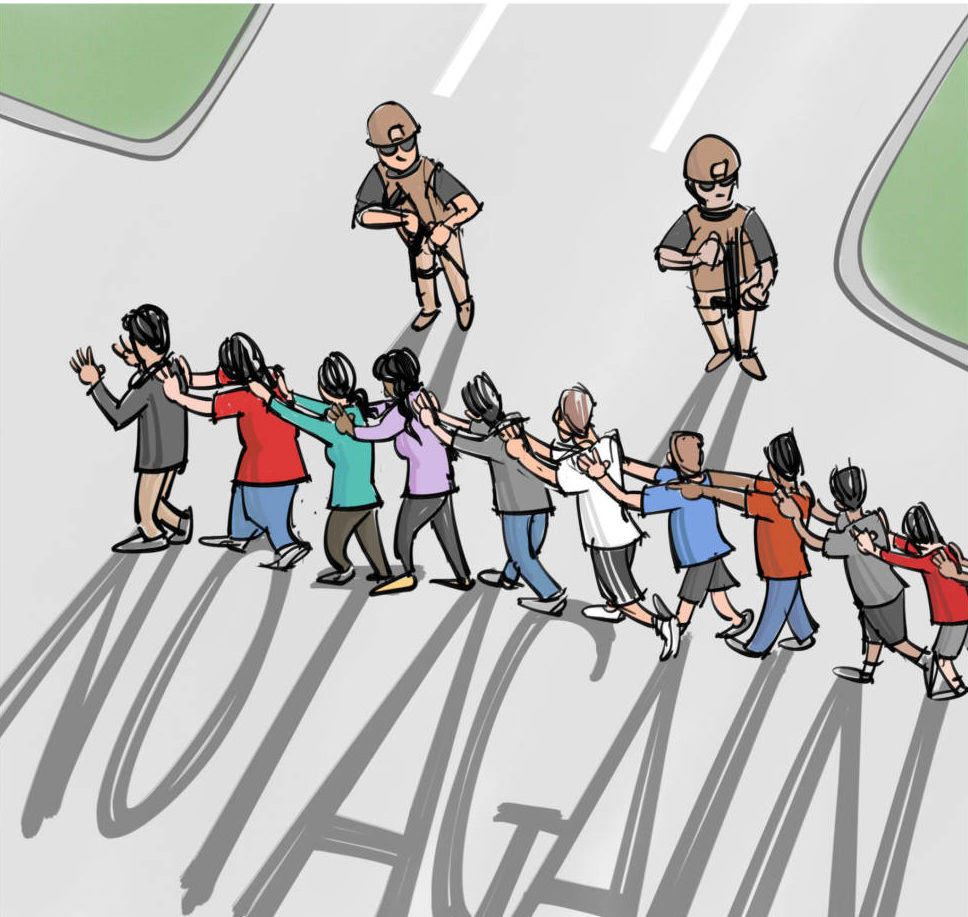Art by Mark Fiore/KQED.
The continuous school shootings across the United States have created controversy over why, after many pushes for change, they are still an occurrence. Some people say it’s because of violent video games, while others say there is a need for stricter gun control laws. The main underlying problem is how mental health issues affect school shootings.
If students in high school are subjected to bullying, it could lead to them wanting to harm other students. But for many, being bullied doesn’t mean you are bound to turn violent. So even as these commonalities are evident, we have to recognize that they are limited. They can’t be used as reasoning for why a school shooter makes a choice like this one, but they help provide a perspective of their experiences prior to the incident. Dealing with social rejection at school could create higher levels of anxiety, depression, aggression, and antisocial behavior. Despite feeling marginalized, 95% of school shooters are male and 61% are caucasian. Some shooters have dealt with psychological problems including depression, suicidal ideation, bipolar disorder, and psychotic episodes. Yet the majority of people with psychological issues aren’t violent and don’t become school shooters.
People have tried to create a school shooter profile countless times, and the end result is that there isn’t one. There should be no profile of a student who wants to cause harm. Many people in society associate the following attributes with a school shooter: usually males who experience bullying, are socially awkward, and/or live in dysfunctional families. These are all based on previous school shooters who had these attributes in common and are taken to generalize all school shooters. Doing this makes it seem easier to look for potential school shooters. But trying to build such a profile is ill-advised and is a highly risky and dangerous strategy, because it could falsely categorize those with similar attributes as school shooters. Though we can’t make one, it’s still valuable to identify the commonalities between school shooters. Doing this can help highlight problems that could minimize the constant occurrence and help those around understand the root of such violent school incidents.
There is so much more we can do as a society to focus attention onto those struggling, like recognizing the earliest behavioral signs, signs of violence, and being responsible to stop and think.
School shootings also have huge negative effects on those who survived them. As they become commonplace, these traumatic events damage the mental health of not only those who experienced them but also those who live in fear that they may experience it as well. A person could experience the following after such a tragic occurrence: increased anxiety, nightmares, insomnia (trouble with sleeping), didaskaleinophobia (fear of schools), inability to trust others, depression, PTSD, decline in academic performance, and the inability to express thoughts and feelings. When something like this happens, many are stripped of a sense of control and comfort at school, and this will continuously affect them throughout life. School shootings create mental health problems amongst survivors, as they are left trying to cope and gain back pieces taken from them.
The truth is that whether or not the perpetrator is diagnosed with these issues, something is going on, and treatment could help address it. There is so much more we can do as a society to focus attention onto those struggling, like recognizing the earliest behavioral signs, signs of violence, and being responsible to stop and think. Yet it’s easy to blame the school for creating problems like this. And while it definitely has a part in, why aren’t the warning signs of these adolescents being paid attention to? Why are the mental health problems of those struggling being dismissed?
The first step is to have school admin and educators teach the importance of “psychological mattering,” which means collecting, listening, supporting, and providing every teen with a place to turn for support or help. The second step involves paying attention to someone showing an explicit signal of imminent threat, which means being able to assess that someone is leaning towards violence. The final step is furthering access to programs and mental health services that help individuals with reducing aggression, developing empathy, impulse control, and improved problem solving skills. The majority of people don’t realize or understand that they have to confront their emotional issues in order to resolve them. With the right tools to help provide social emotional learning, those with this mindset are capable of being fully aware of themselves and understand why acting out in such a way is inhumane and inconsiderate.
Jayla Farrington is a junior at Washington High School. She was born and raised in Charlotte, North Carolina, but moved to California in early 2016. This will be her first year with the Hatchet. Jayla plans on covering controversial topics such as mental health, entertainment, and racial discrimination. She enjoys anything to do with art, traveling, and music. Her future plans involve becoming a psychiatrist and therapist because mental health is a really important topic to her.

